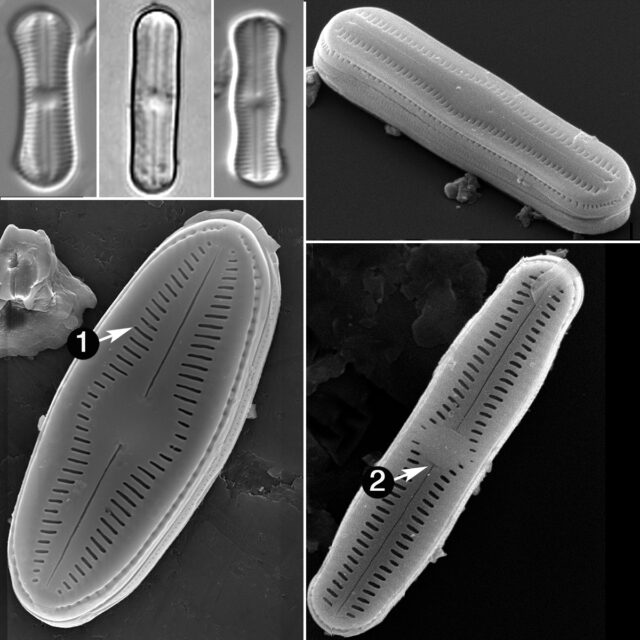Guide to Humidophila

Credit: Rex Lowe, Marina Potapova, Sarah Spaulding
- Striae composed of single elongate areola
- External, proximal raphe ends may be anchor-shaped
Valves are small, usually less than 20 µm. Valves are linear, linear-elliptic or elliptic. The apices are broadly rounded. Striae on the valve face are composed of one usually transapically elongated, elliptic to ovoid areola. The raphe may be secondarily filled with silica. Cells are often joined to form filamentous colonies.
There are number of additional morphological features of Humidophila, many of which are visible only with SEM. The valve face is flat and may have a narrow rim, or ridge, differentiating the face from the mantle.
A single elongated areola lies on the mantle, in line with each stria. Areolae on the mantle may appear to be located on the valve face in species that lack a narrow rim. This arrangement gives the impression of two areolae per stria on the valve face (but there is actually only one). Near the apices, slit-shaped areolae may be present on the mantle. Internally, areolae are internally covered by a porous hymen.
The raphe is filiform and straight. The external proximal raphe ends are simple and straight, or they may be expanded pores or anchor-shaped. The proximal ends are not deflected, bent or hooked. Externally, the distal raphe ends are straight and lack terminal fissures. Internally, the distal raphe terminates in a small helictoglossa.
The genus Humidophila is most abundant in aerial or subaerial habitats, and the genus is particularly diverse in the Antarctic and sub-Antarctic. Cosmopolitan taxa include H. contenta (Grunow ex Van Heurck) Lowe et al. and H. paracontenta (Lange-Bert. and Werum) Lowe et al. The genus includes 47 species formerly included in Diadesmis.
 Diatoms of North America
Diatoms of North America